What to Wear as You Try On Wedding Dresses for Your Big Day
The journey to try on wedding dresses is a memorable rite of passage for many brides-to-be, filled with anticipation, joy, and even a touch of nervous excitement. It’s more than just a shopping trip; it’s a pivotal experience in your wedding story. However, there’s an aspect often overlooked in the flurry of excitement: what you should wear when trying on these potential dream dresses. The right preparation can profoundly impact your dress selection process, offering a realistic vision of your big day look and ensuring your comfort throughout the experience. From setting expectations to understanding silhouettes and the vital role of undergarments, we’ve compiled a comprehensive guide for this special occasion.
Setting the Scene: Dress Shopping Expectations
Every bride dreams of that magical moment when she finds the dress, the one that makes her heart skip a beat. But like any profound experience, preparation and setting the right expectations are key. It starts with understanding the wedding dress terrain. Research, either online or through bridal magazines, provides a foundation. Recognizing which designs resonate with you can streamline your visits to bridal boutiques, ensuring that the process is more focused and less overwhelming.


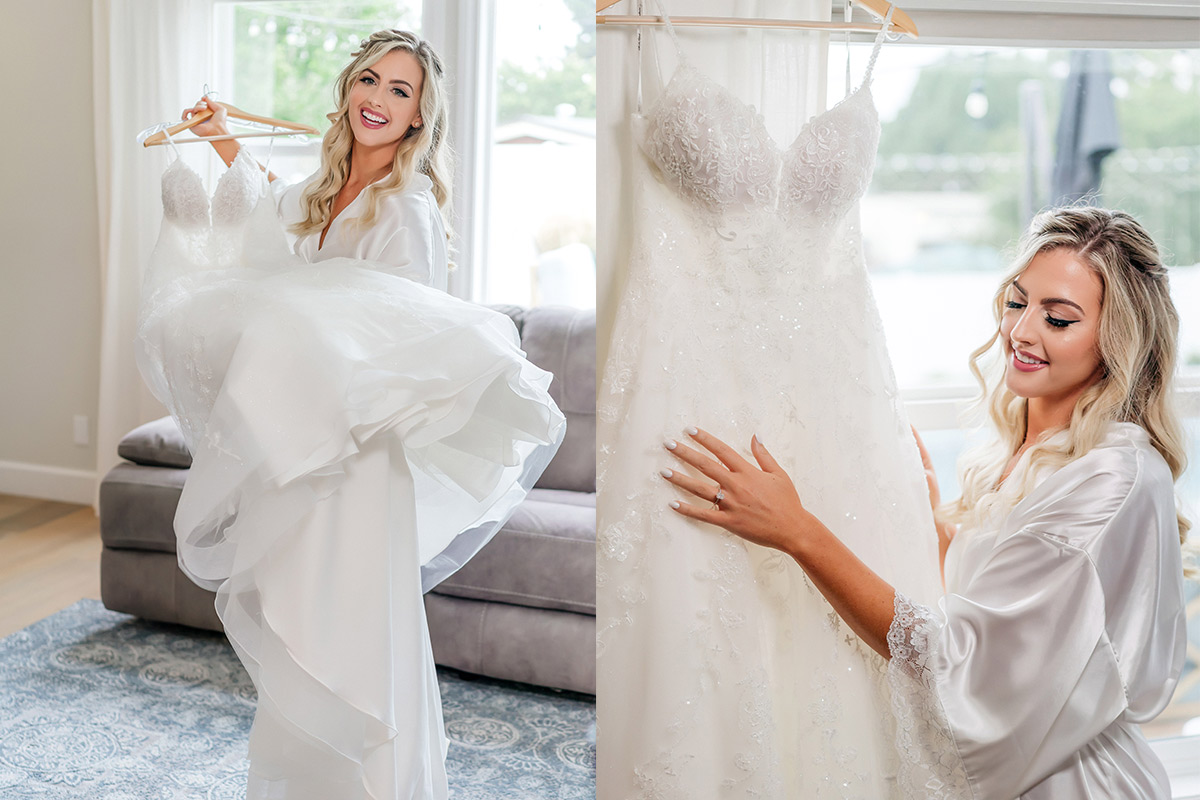
Equally important is managing emotional expectations. Wedding dress sizes often differ from regular clothing sizes, with bridal wear usually running smaller. This shift can be a surprise to many. Remember, the goal is to find a dress that fits and flatters, not to fixate on a number. Bring along supportive friends or family who can provide honest and constructive feedback. Their presence can help in grounding your experience, ensuring that emotions don’t cloud judgment. After all, this is a decision that resonates far beyond the fitting room.
Understanding Different Wedding Dress Silhouettes
Bridal fashion offers a plethora of styles, each carrying its own charm and statement. Before stepping into a boutique, it’s beneficial to have a basic understanding of the main wedding dress silhouettes. The ballgown, with its grand skirt, speaks of fairy tales and tradition. The A-line offers a flattering fit for almost every body type. Mermaid and trumpet styles hug the body, celebrating every curve, while the sheath dress presents a minimalist and modern aesthetic. Meanwhile, the tea-length dress, hovering gracefully between the knee and ankle, evokes a vintage charm perfect for a retro-inspired celebration.
However, knowing is just the first step; experiencing these styles is where the magic truly happens. As you try on each silhouette, be mindful of your body’s movement. How does the dress flow as you walk? Can you dance freely? The dress you choose should complement not just your body, but also the nature of your wedding. If you envision a night of dancing, a restrictive dress might not be ideal. This exploration phase, where knowledge meets experience, helps in narrowing down a style that is both stunning and functional.
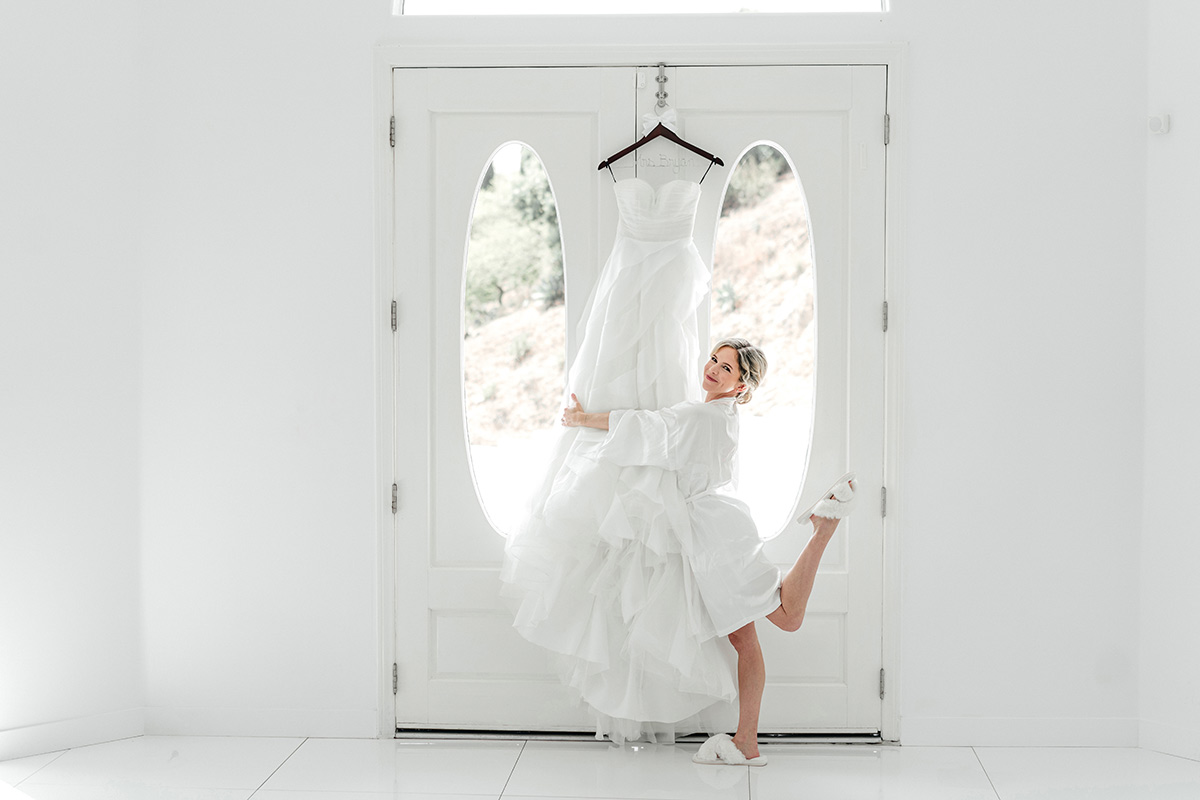
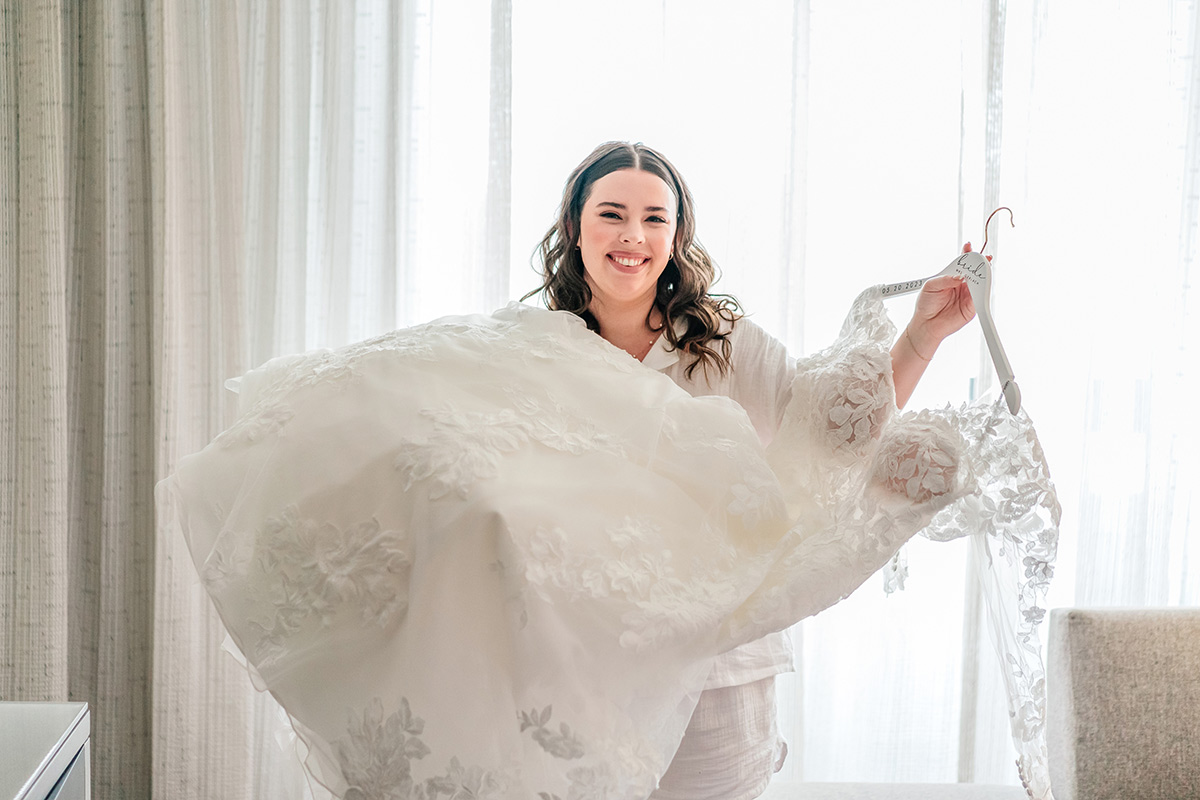
The Importance of Comfortable Undergarments
As brides eagerly try on wedding dresses, envisioning their magical day, there’s an underlying aspect that often doesn’t get the limelight but plays a pivotal role: undergarments. The foundation of any great outfit, especially a wedding dress, rests on the undergarments chosen. Just as a painter needs a smooth canvas to create a masterpiece, brides require the right supportive layers to ensure their chosen gown fits perfectly and looks impeccable.
When you try on wedding dresses, the silhouette, drape, and overall appearance of the gown can be dramatically influenced by the undergarments worn underneath. A well-fitted bra can enhance the bust line, while seamless underwear ensures there are no visible lines disrupting the smooth flow of the dress. Furthermore, certain dresses might require specialized undergarments, such as strapless bras or shaping bodysuits, to achieve the desired look. Investing time and thought into selecting these pieces is as crucial as the effort put into finding the dress itself.
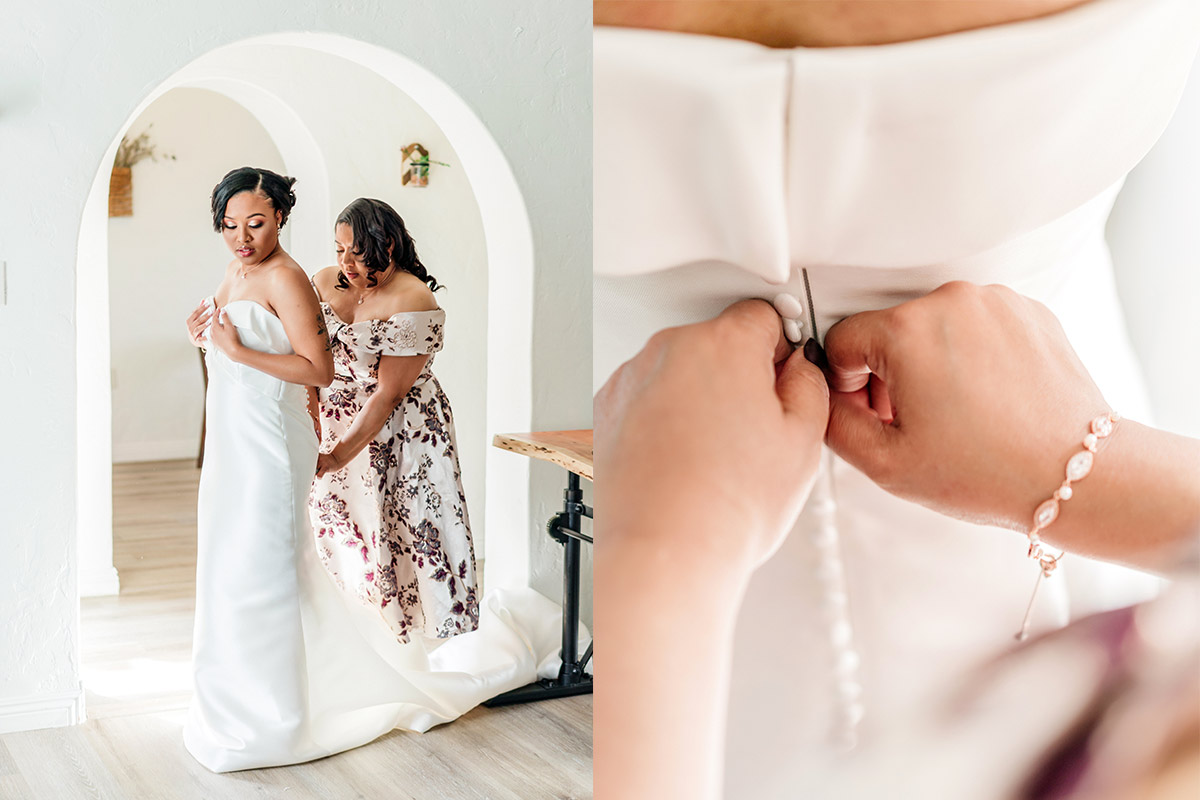
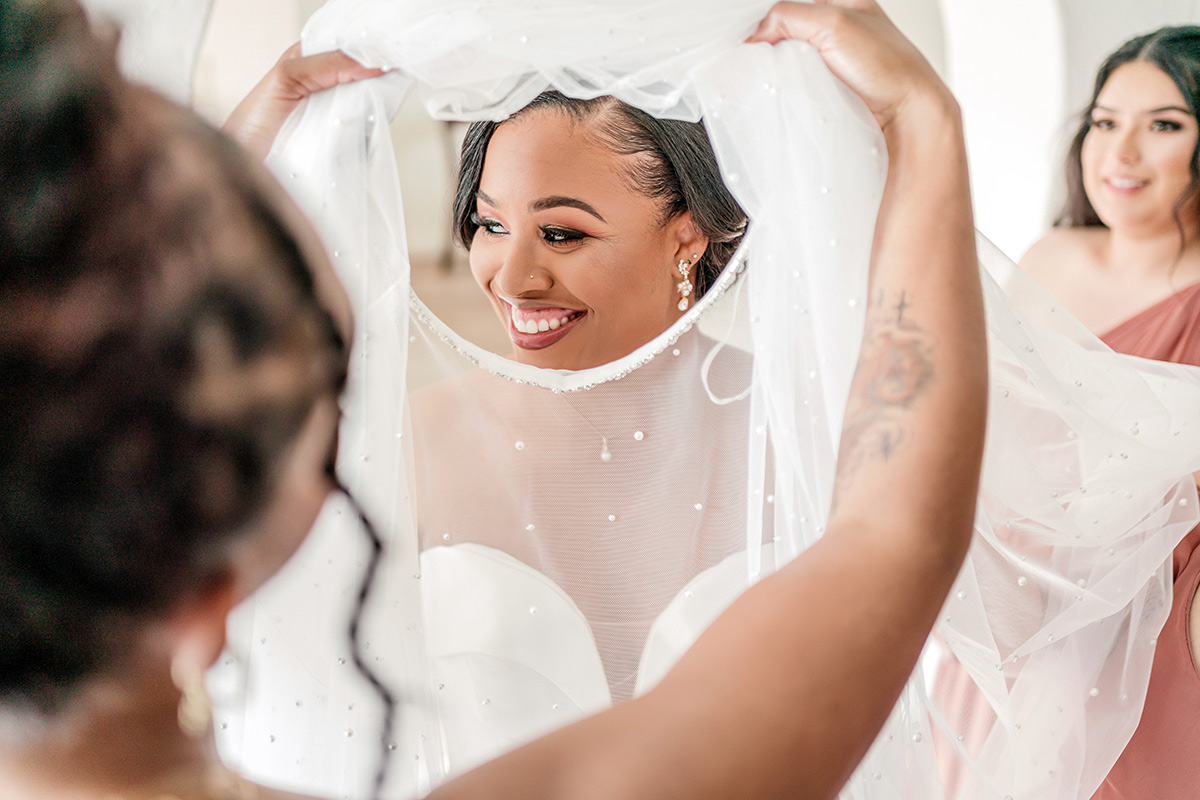
However, beyond aesthetics, there’s a fundamental aspect that should guide the choice of undergarments: comfort. The wedding day is a marathon of emotions, activities, and memorable moments. Being encased in uncomfortable undergarments can become a distraction and take away from the joy of the occasion. As brides try on wedding dresses, it’s essential to also experiment with various undergarments to find the perfect balance between support, style, and comfort, ensuring they feel as fabulous as they look.
Choosing the Right Shoes: Height Matters
Stepping into the world of wedding dress shopping can be exhilarating. But as you step in, what are you stepping into? The shoes you wear while trying on potential dream gowns can significantly influence your dress choice. If you already have your wedding shoes, it’s advantageous to take them along. However, if you’re still in search of that perfect pair, consider the height you’re aiming for. Will you be donning heels, opting for comfort with flats, or perhaps choosing wedges for a mix of height and stability? This decision can greatly influence the length and style of the gown you select.
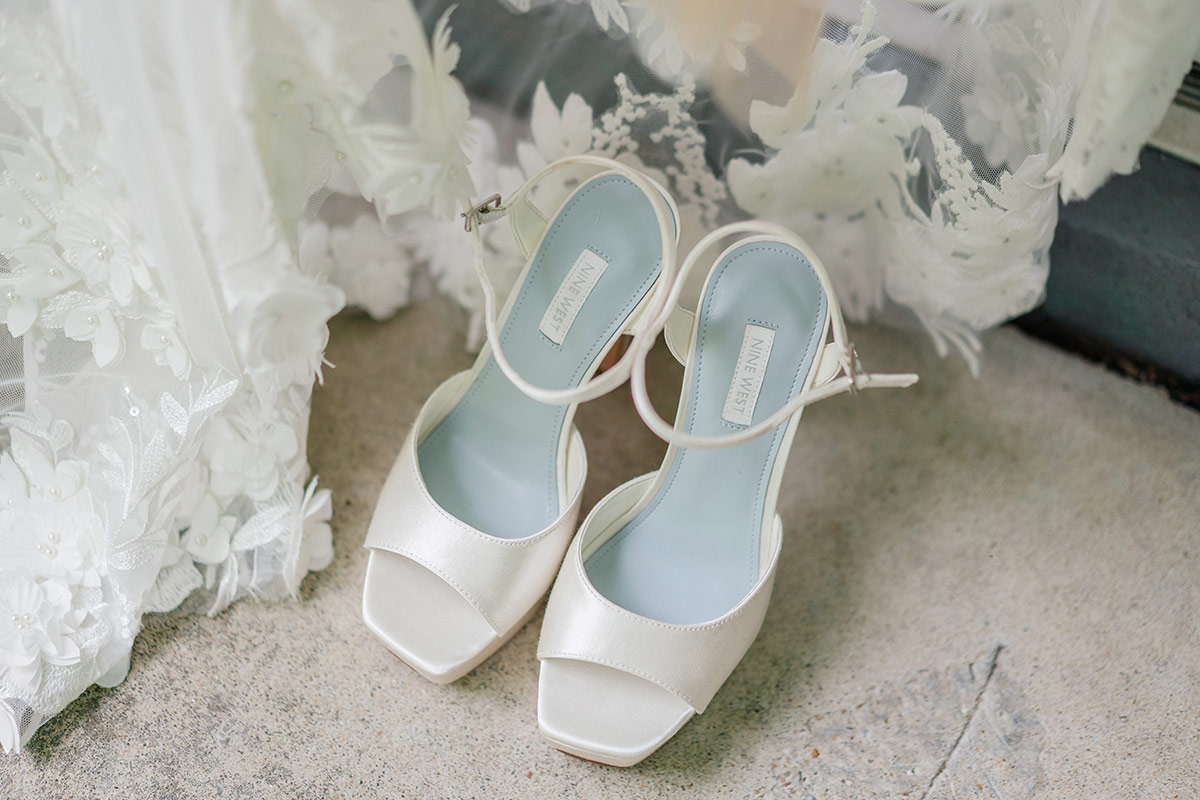
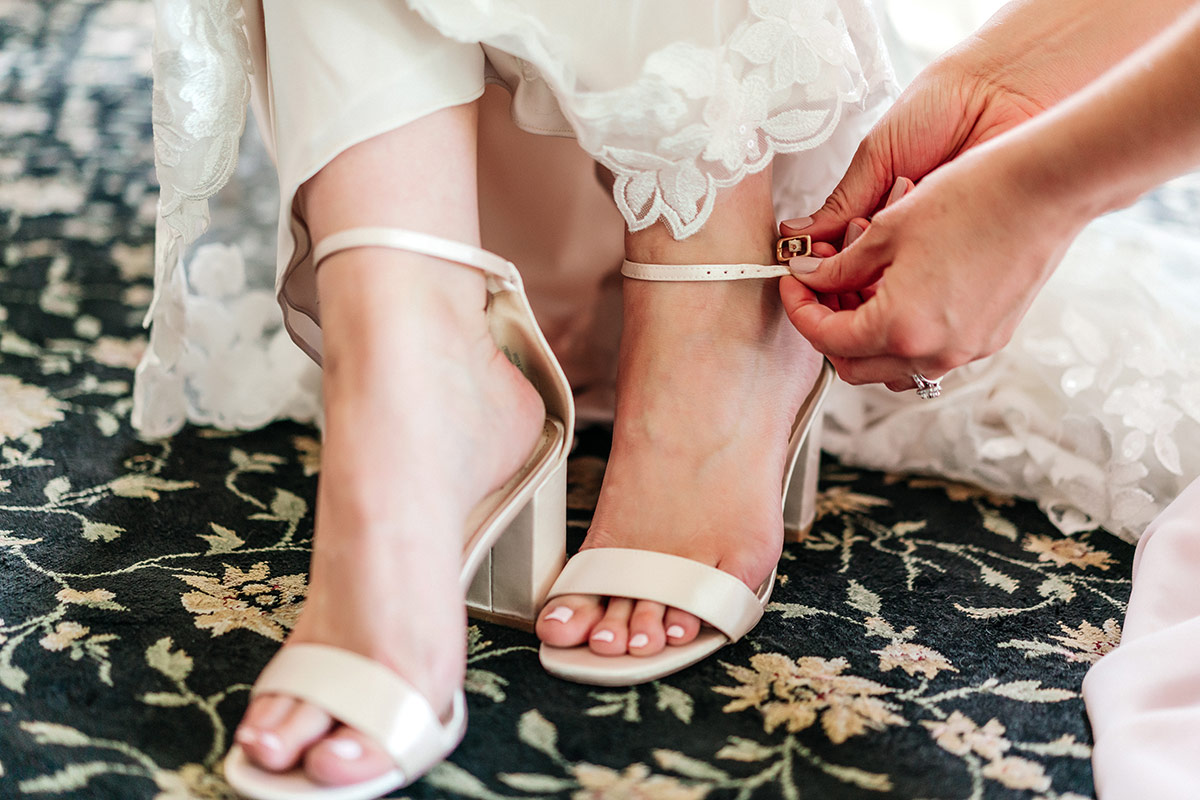
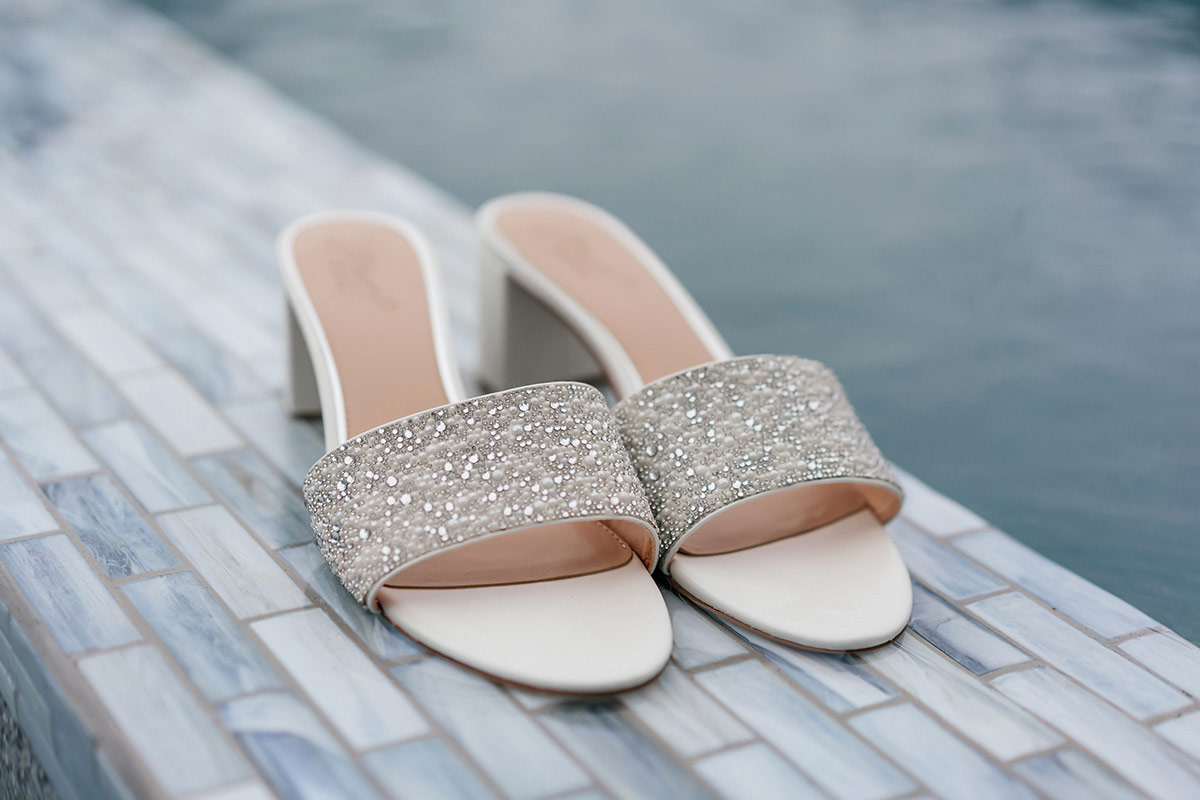
Shoes do more than just add inches; they affect posture, walk, and confidence. Wearing a heel height similar to what you envision for your wedding day provides a more realistic perspective during fittings. A dress’s hem might appear perfect with flats but too short with heels. Conversely, a long gown might look stunning with heels but overwhelming and dragging with flats. Furthermore, the shoes can set the tone for the entire outfit. A pair of glittering stilettos might guide you towards a more glamorous gown, while boho sandals might resonate with a breezy, beach-appropriate dress. So, when trying on wedding dresses, let your shoes walk and talk with you.
Accessorizing Early: Veils, Tiaras, and More
The gown, undeniably, is the centerpiece of bridal attire. But the accessories, like veils, tiaras, earrings, and necklaces, play an instrumental role in completing the look. When trying on dresses, it’s beneficial to experiment with these accessories early on, as they can provide a holistic view of your potential wedding day ensemble.
Veils, ranging from short blushers to dramatic cathedral lengths, can alter a dress’s aesthetic immensely. While a dress might appear simple at first, adding a veil can introduce an element of drama and tradition. Tiaras and headpieces, on the other hand, offer a regal touch, making the bride feel like royalty. Then there’s the sparkle: earrings, necklaces, and bracelets. Depending on the dress’s neckline and overall design, the choice of jewelry can either be minimalistic or statement-making. However, it’s essential to strike a balance. A heavily adorned dress might only need subtle earrings, while a minimalist gown might benefit from a statement necklace. By accessorizing during the trial phase, you allow yourself the opportunity to visualize the entire ensemble, ensuring that every piece harmonizes with the other.
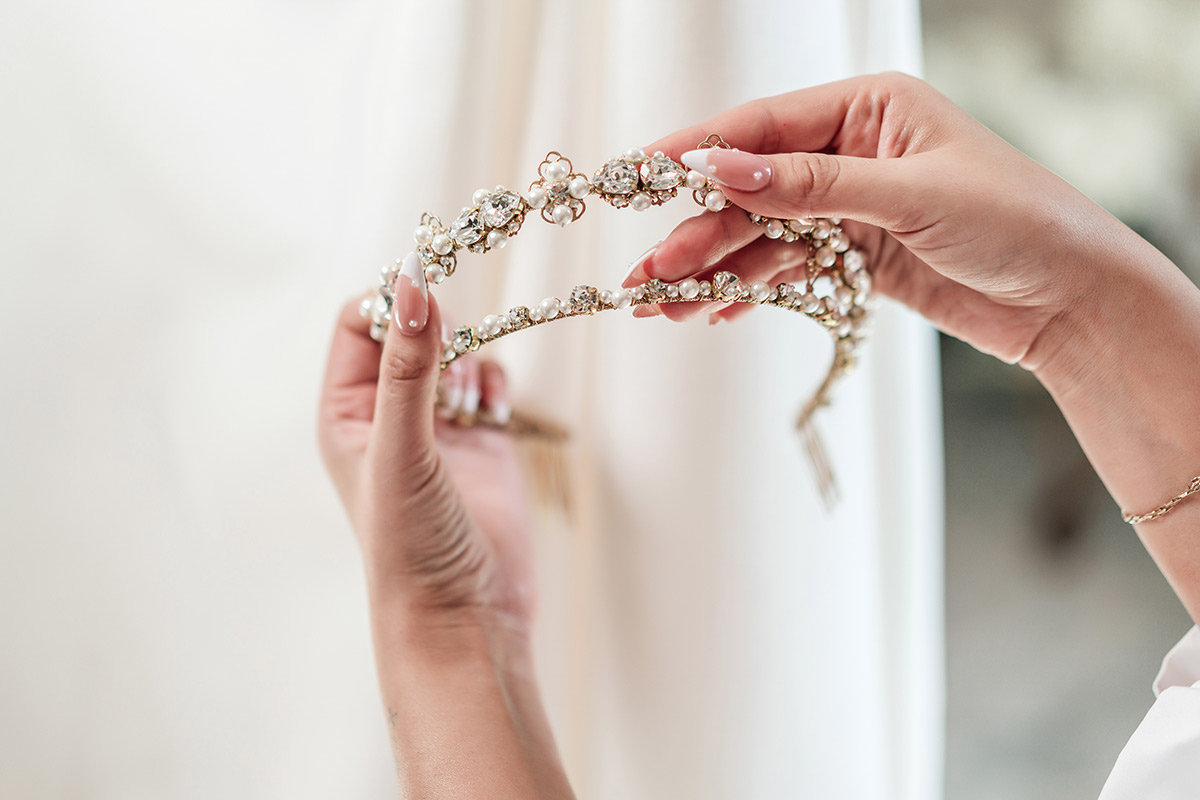

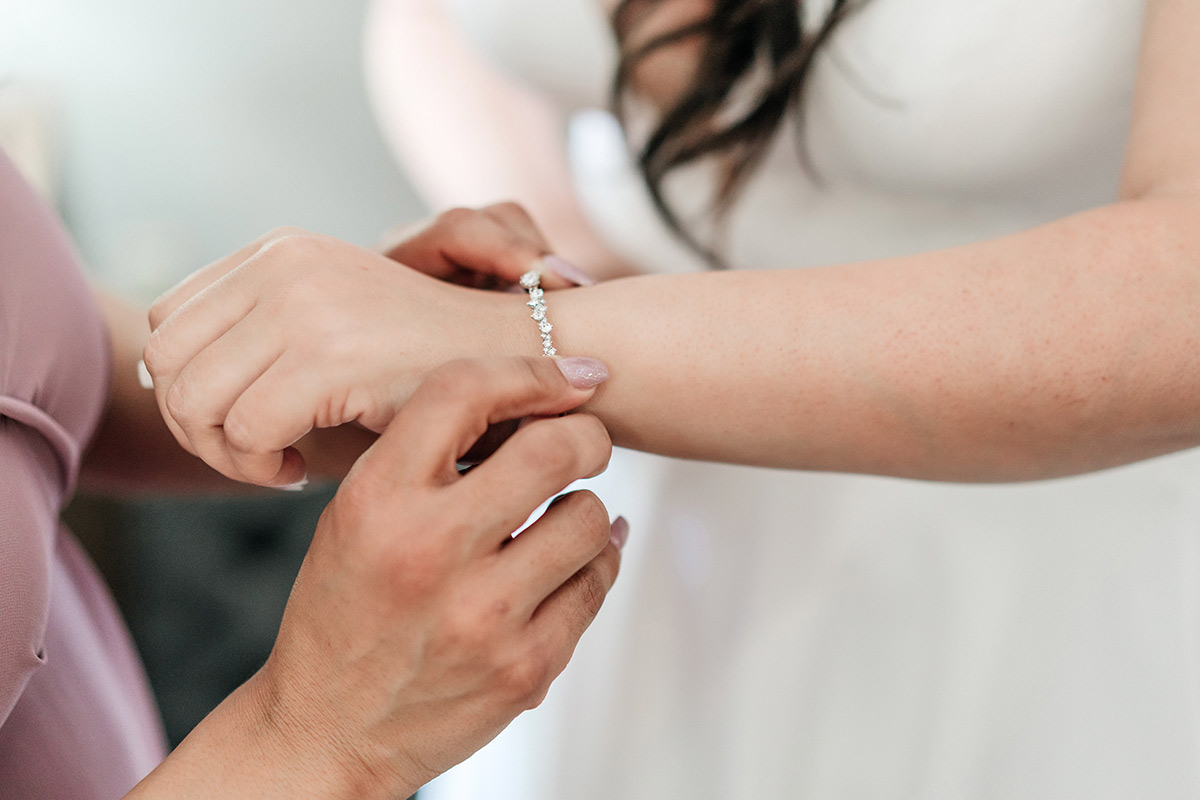
Dressing for Your Body Type: Tips and Tricks
Every individual boasts a unique body shape, and recognizing and dressing for it can elevate the entire wedding look. Before diving into the sea of wedding dresses, it’s beneficial to understand which silhouettes complement your body type the most. For instance, hourglass figures, characterized by balanced bust and hip measurements with a defined waist, often shine in mermaid or fit-and-flare gowns. Meanwhile, pear-shaped bodies might lean towards A-line dresses that highlight the waist and flow gracefully over the hips.
But while understanding body types provides a roadmap, it’s essential not to be confined by it. The most crucial criterion is how the dress makes you feel. Do you feel confident, beautiful, and, most importantly, like yourself in it? Trends come and go, but your comfort and confidence are timeless. Moreover, tailoring can work wonders. Even if a dress doesn’t fit perfectly off the rack, alterations can customize it to your form, ensuring that it celebrates every curve and angle. So, as you sift through racks and try on various gowns, remember to wear your confidence as the most dazzling accessory.
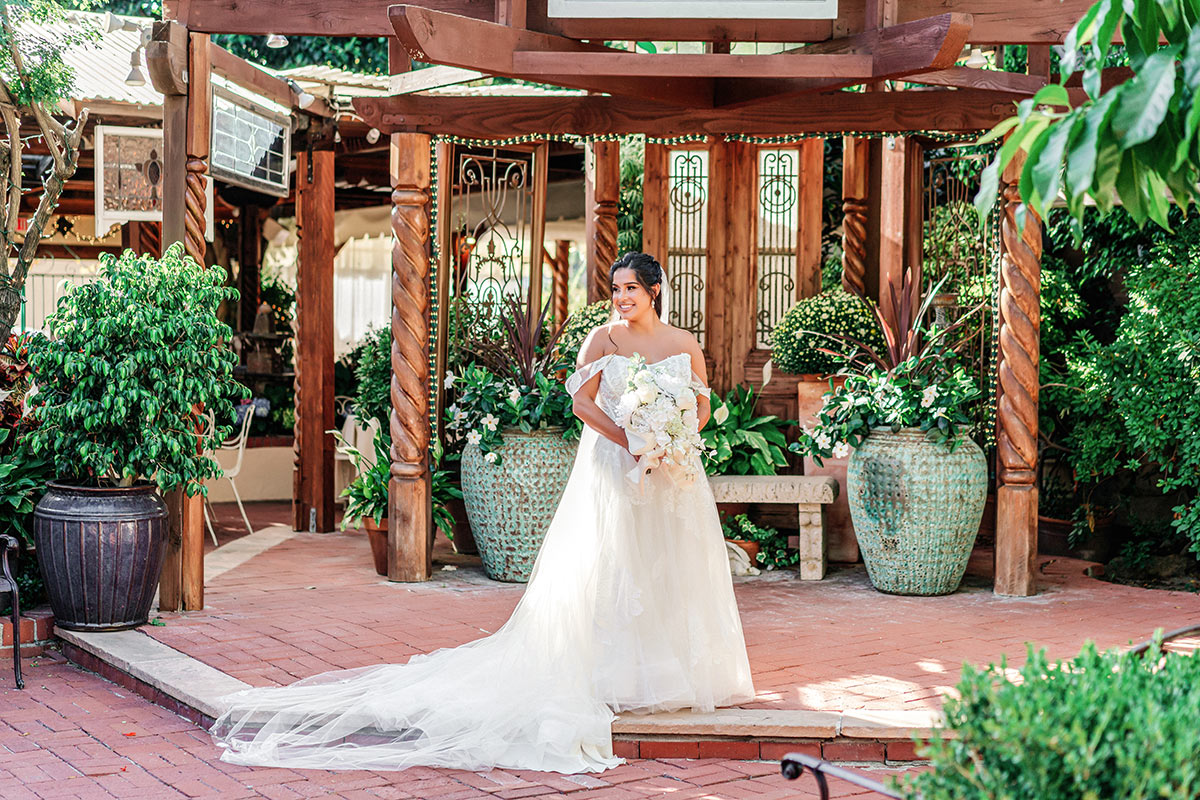

To Sleeve or Not to Sleeve: Arm Coverage Options
When it comes to wedding dresses, sleeves are not merely about coverage; they’re about making a statement. Sleeve styles have evolved dramatically over the years, offering brides a plethora of options. From full-length sleeves for those looking for traditional or modest styles to cap sleeves for a hint of coverage, and even off-shoulder designs for a romantic flair, the choices are abundant. Beyond the types, there’s also the material to consider—lace for vintage allure, sheer for subtle elegance, or embellished for a touch of glamour.
However, deciding on a sleeve requires considering factors beyond just aesthetics. Think about the wedding’s venue and season. A summer beach wedding might not be conducive to long, satin sleeves, while they might be perfect for a winter church ceremony. Mobility is another key consideration. Ensure that the chosen sleeve style allows freedom of movement, especially if you plan on dancing the night away. The sleeve should enhance both the dress’s beauty and the bride’s comfort, striking the perfect balance between form and function.
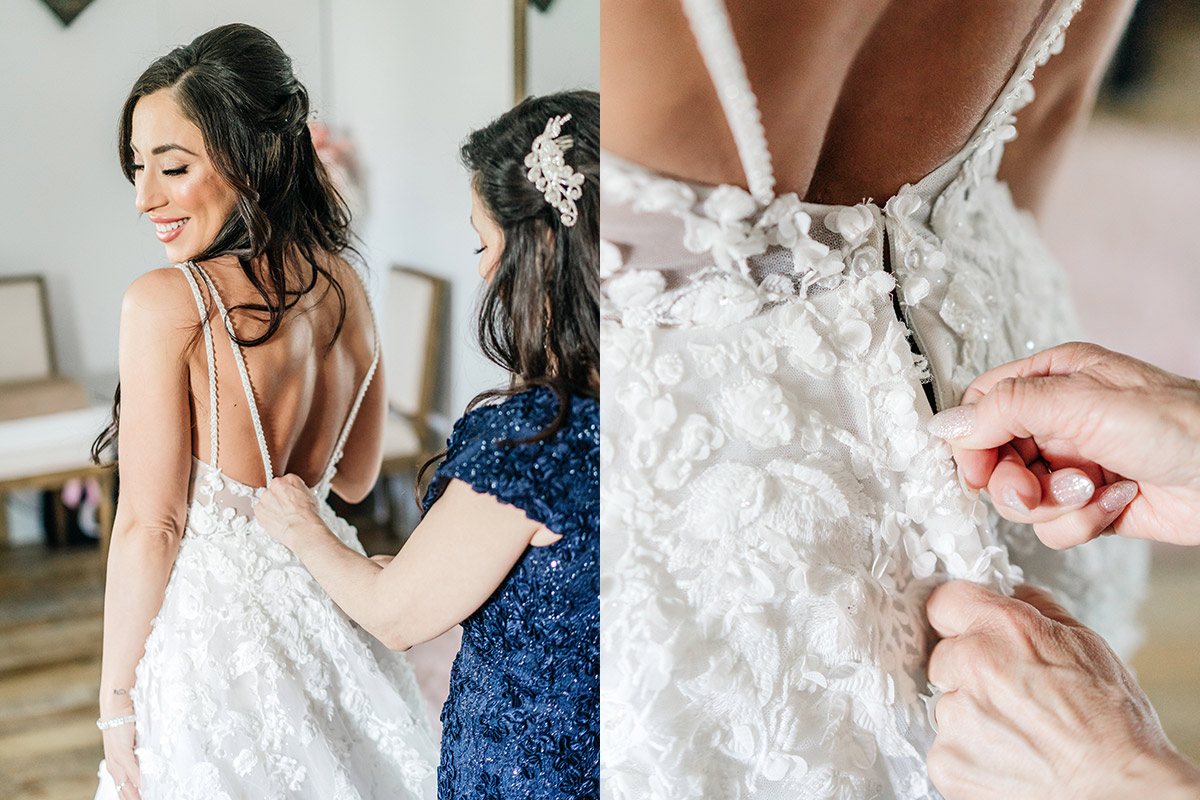

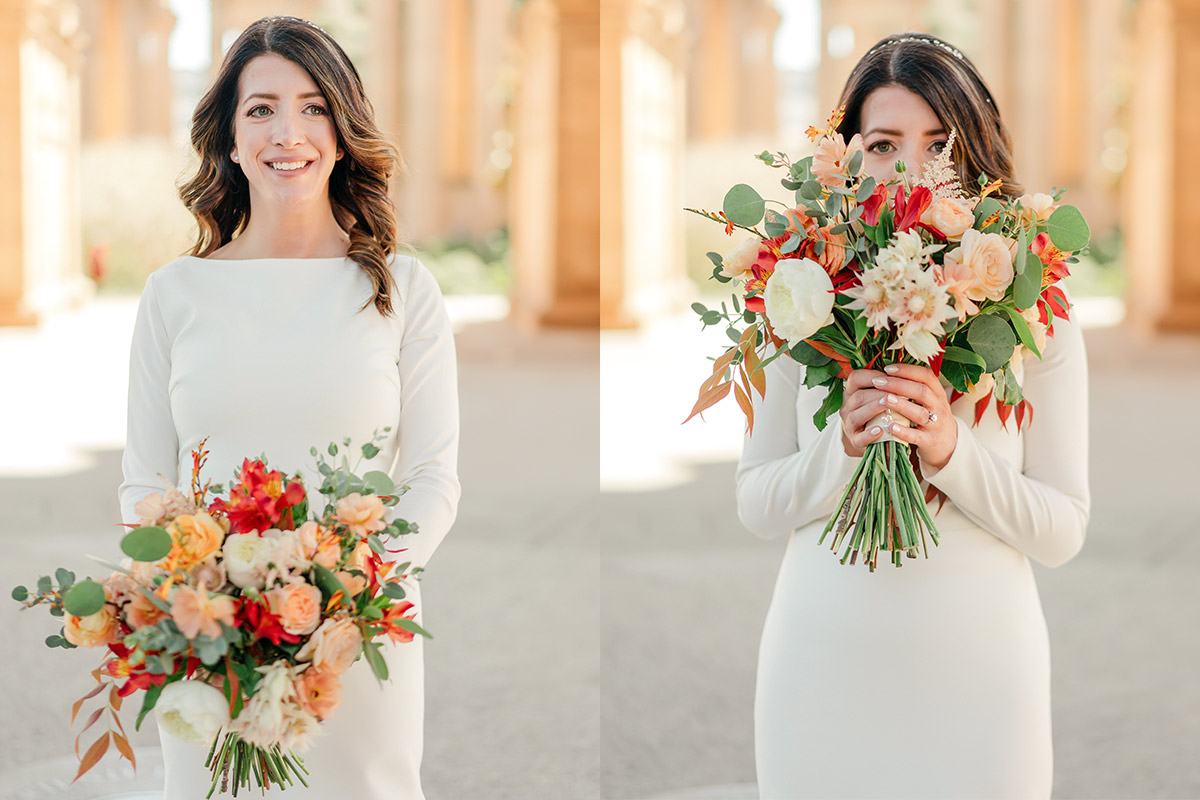
Feedback Loop: Who to Bring to Your Fitting
The act of trying on wedding dresses is intimate and often emotional, making the choice of companions for this venture crucial. While movies and TV shows might depict brides surrounded by a posse of friends and family, in reality, it’s essential to select a few whose opinions you genuinely value. Too many voices can muddle the process, making it harder to decipher your feelings about a dress.
Choose people who know you well and understand your style. This could be a combination of close family members and a best friend or two. Their feedback should be constructive, ensuring that it helps rather than hinders your decision-making. Remember, this moment is about you and your vision for your big day. While input from loved ones is invaluable, it should never overshadow your feelings or preferences. The aim is to create an environment of support and understanding, ensuring that the dress shopping experience is both fruitful and joyful.
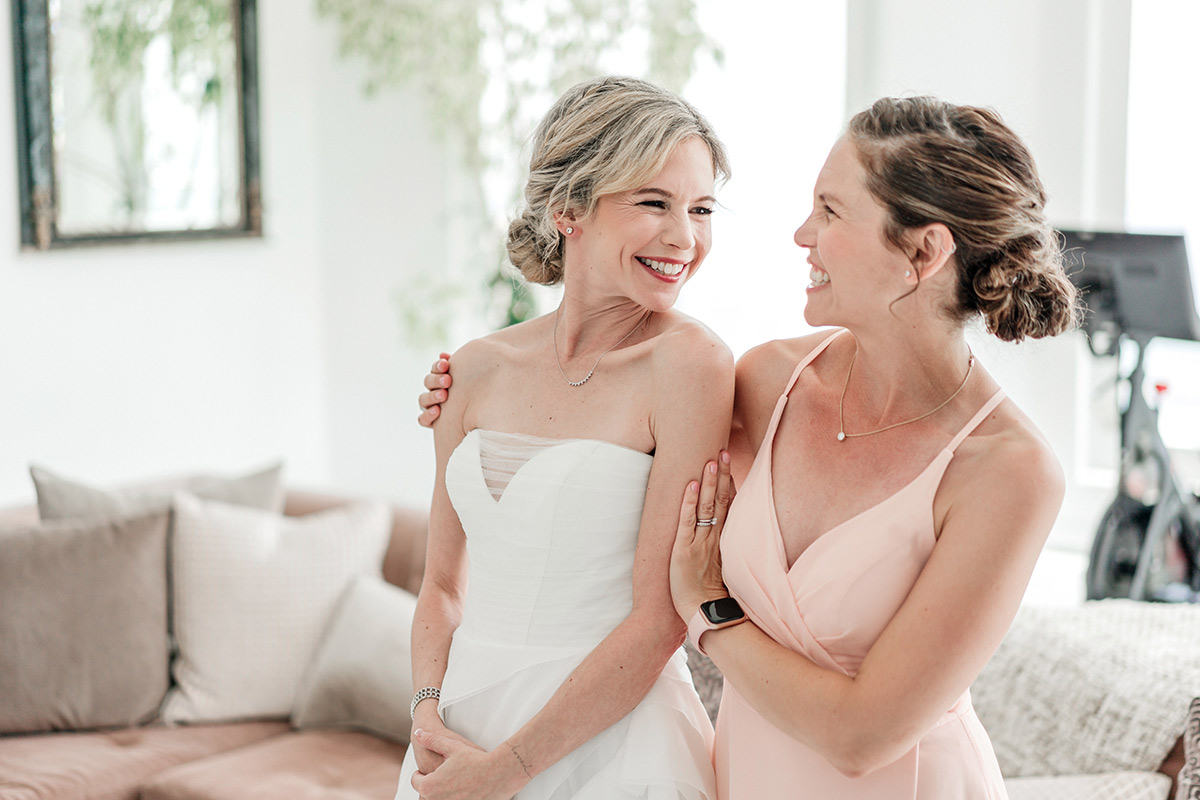
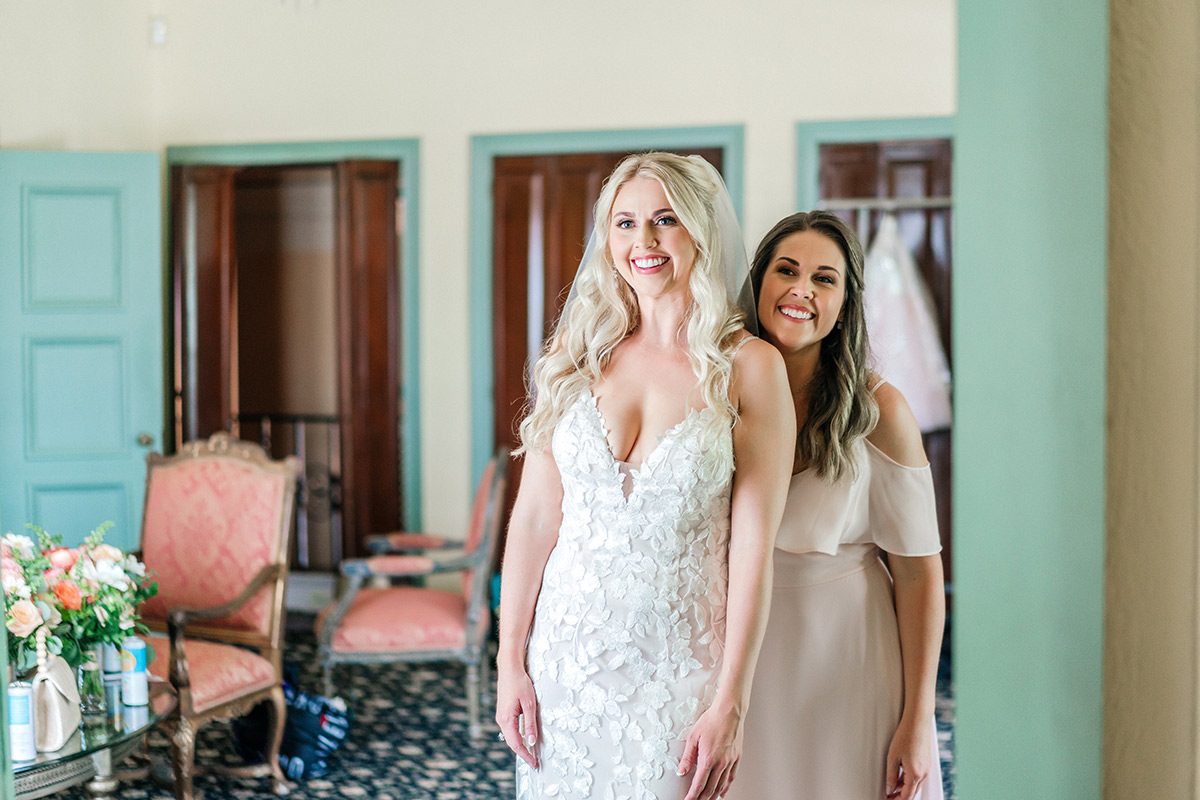
The Final Decision: Trusting Your Instincts
As you slip into various gowns, listen to feedback, and imagine your big day, there comes a moment where one dress might resonate more than others. This connection is more than just about how the dress looks—it’s about how it makes you feel. Do you see yourself walking down the aisle in it? Can you envision your partner’s reaction? The right dress often evokes a profound emotional response.
It’s perfectly normal to second-guess, given the magnitude of the decision. However, at this juncture, it’s vital to trust your instincts. If you find yourself constantly thinking about a particular dress, that’s a significant indicator. While advice and feedback are crucial, the final decision lies with you. After all, it’s your day, your moment.
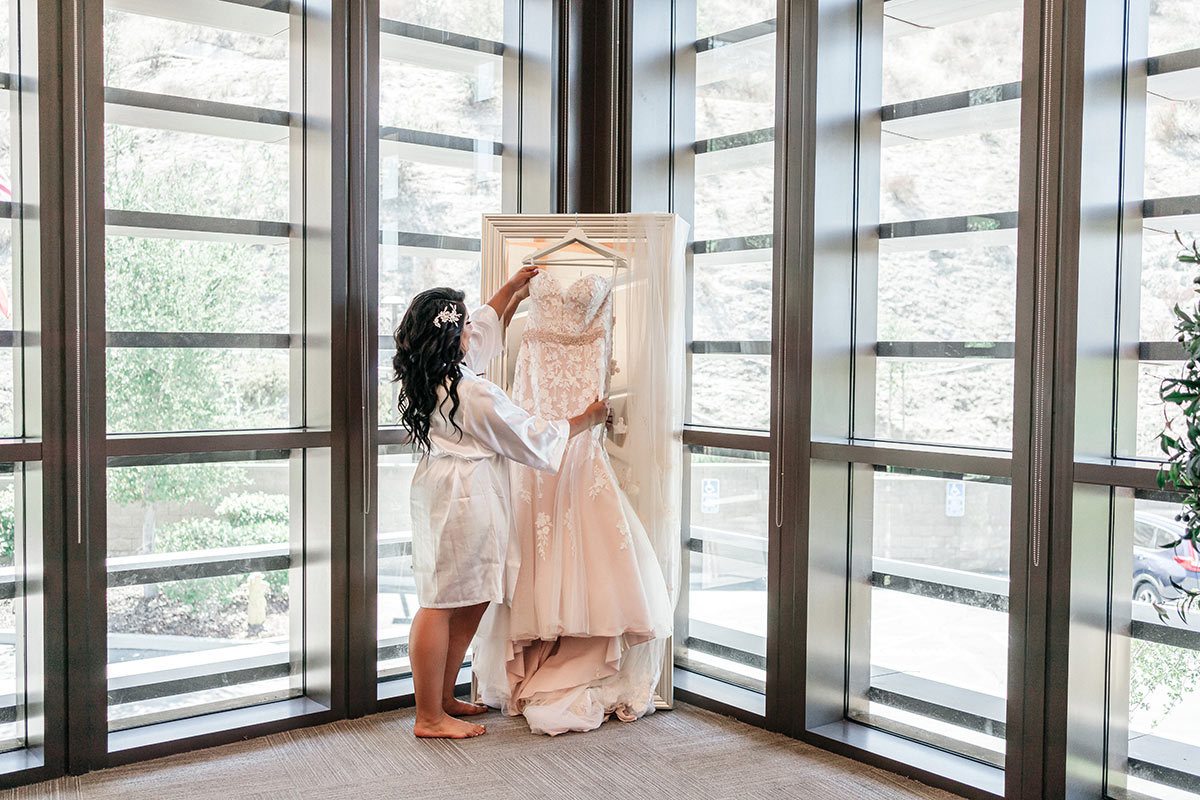
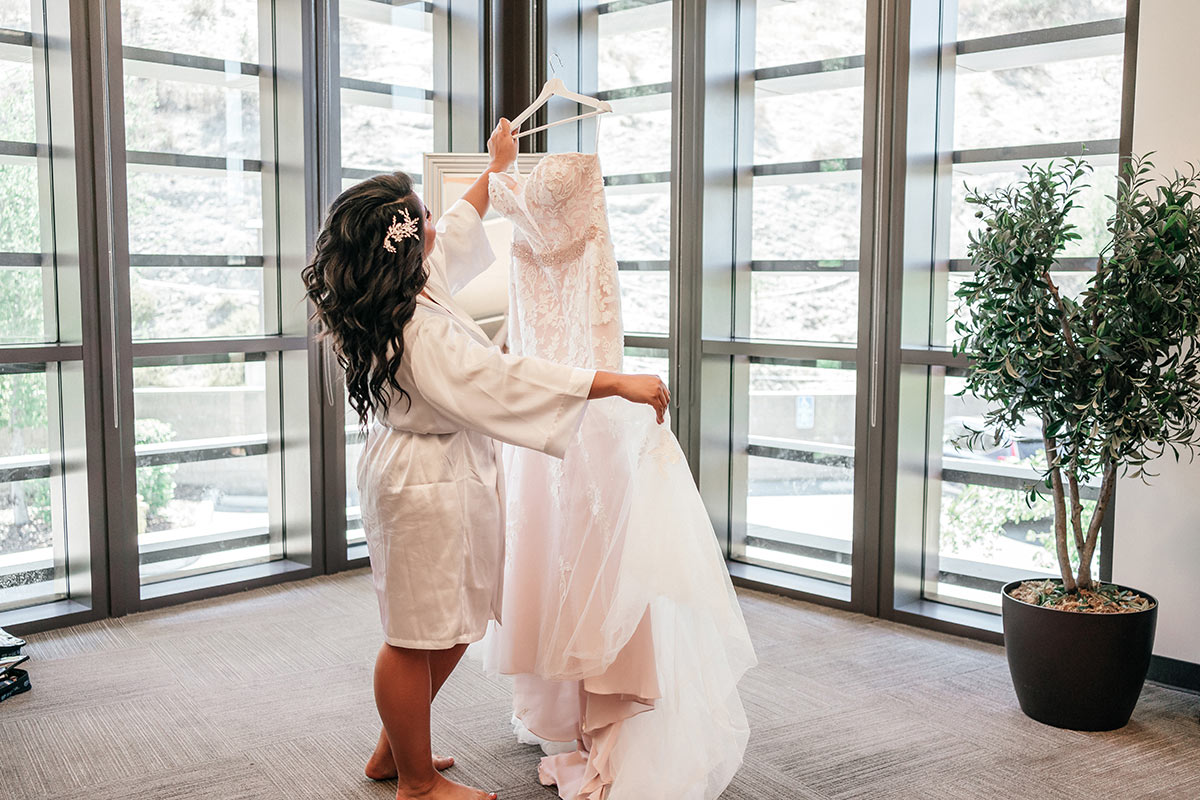
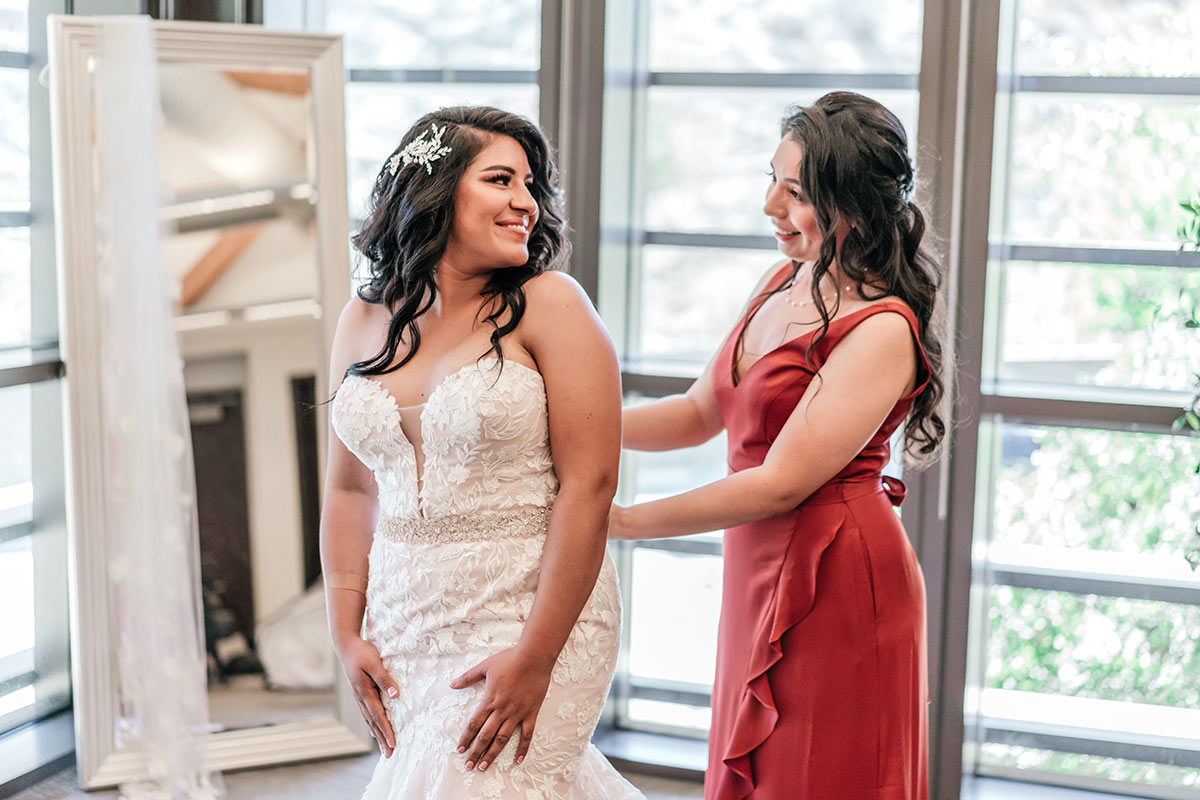
Choosing a wedding dress is a journey filled with anticipation, joy, occasional doubts, and ultimately, elation. As you navigate this path, remember that the perfect dress is one that aligns with your personality, comfort, and vision for the day. It’s a reflection of you at this significant life moment. Trust in your choices, embrace the experience, and step into your wedding day with confidence and grace.
